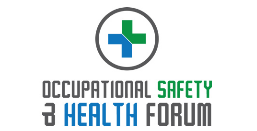Safety leaders across the UK are turning to digital risk management platforms to modernise how they assess, mitigate, and monitor operational hazards. In 2025, selecting the right software partner is about more than digitising forms, it’s about empowering safety teams with real-time insight, audit readiness, and proactive risk control. Here are some of the key factors attendees at the OSH Forum are con when evaluating a risk management software provider…
- Usability and User Adoption
A system is only as effective as its users. Choose a platform with an intuitive, user-friendly interface that frontline staff, not just risk professionals, can navigate easily. Mobile accessibility is crucial, your teams need to perform inspections, report hazards, and access protocols from any device or location. Features like offline mode, QR code scanning, and voice input can also boost engagement and data quality.
Look for vendors that offer customisable dashboards and workflows to match your organisation’s processes, terminology, and approval structures. Software that fits around your teams, not the other way around, will deliver faster onboarding and higher adoption rates.
- Advanced Analytics and Reporting
Data is the engine of modern risk management. The best platforms don’t just store incident reports, they generate insights. Prioritise systems with real-time analytics, automated risk scoring, and visualisation tools to help identify trends, hotspots, and recurring failures. AI-driven suggestions for risk mitigation or predictive alerts based on past data are increasingly valuable in 2025.
Built-in reporting templates for board presentations, regulator submissions, and ESG metrics can also save time and ensure compliance with standards such as ISO 45001.
- Integration Capabilities
Your risk management platform should work seamlessly with other systems, such as HR, asset management, maintenance scheduling, and training platforms. API access and out-of-the-box integrations reduce duplication, improve data consistency, and provide a fuller picture of organisational risk.
In industries like construction, manufacturing, and logistics, integration with wearables, sensors, and building management systems is also a growing requirement for real-time risk visibility.
- Compliance and Sector Expertise
Different sectors face different compliance demands. Select a partner familiar with your industry’s regulations and best practices, whether that’s RIDDOR in the UK, HSE guidelines, or sector-specific standards. Ask for case studies or client references in your field.
- Vendor Support and Scalability
Strong customer support, training resources, and implementation services are essential. Choose a vendor that offers ongoing account management, regular platform updates, and the ability to scale with your organisation as your needs evolve.
Choosing the right risk management software partner means investing in a platform that enhances safety performance, drives smarter decision-making, and supports compliance in a rapidly changing environment. For safety leaders, it’s a critical step towards building a proactive, data-led safety culture.
Are you searching for Risk Management/Assessment solutions for your organisation? The Occupational Safety & Health Forum can help!





